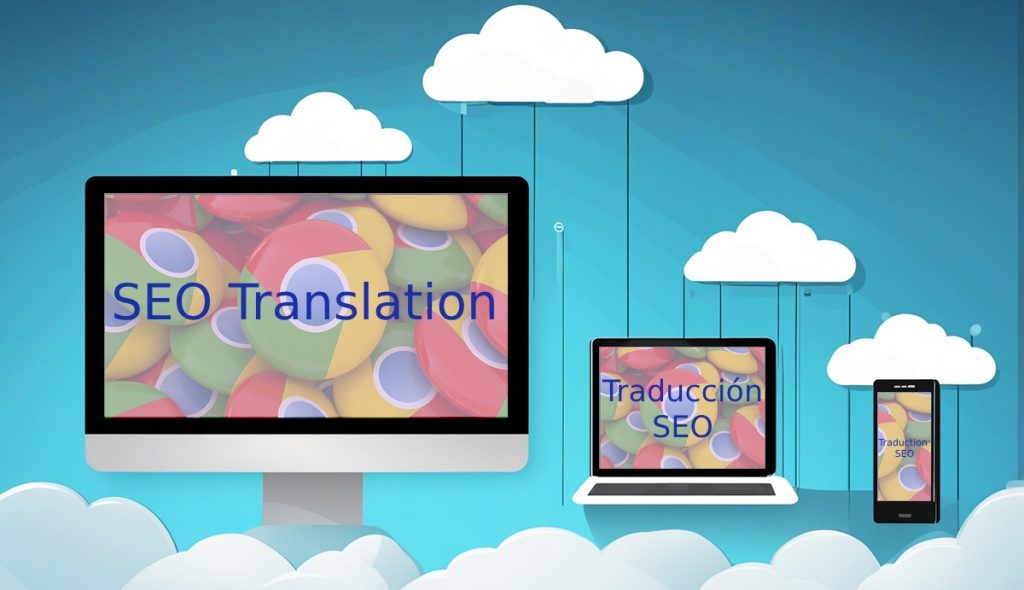Are you keen to expand your business into new territories? Perhaps you’ve identified a demand for your product or service, and want to reach new clients? Translating your website gives you the potential to reach a far larger audience, however, a word-for-word content translation isn’t enough. You also need to make sure that your site ranks well in the preferred search engine results of your target country. Localization, SEO best practices, and high-quality, culturally appropriate translation are all necessary elements in this process. We’ll help you to discover the best approach for your site!

1. Choose a Human Translation Service
There are several ways to translate a website, but not all methods yield the same results in terms of quality and SEO (Search Engine Optimization) improvement. These include:
Machine Translation
Over recent years, there have been clear improvements in machine translation. However, the outcomes still often lack the subtlety and quality of the original, meaning this tool is best suited to enabling basic understanding. Indeed, while certainly helpful if you’re trying to decipher a restaurant menu in a foreign country, the unnatural, awkward, or downright incorrect phrasing often produced by a machine translation is definitely something your professional website can do without!
Google’s guidelines on machine translation are somewhat vague too. While they acknowledge AI content has its uses, they have penalized many sites for AI translations and do say, “Using automation—including AI—to generate content with the primary purpose of manipulating ranking in search results is a violation of our spam policies.”
Human Translation
Human translators are not only masters of both the source and target languages, but they also understand how the cultural context affects how content is received. For example, a phrase that resonates well in one culture may fall flat – or even offend – in another. A professional translator understands the target audience’s expectations and ensures the translation meets them.
2. Localize as well as translate
Translation is primarily a question of converting text from the source to the target language, ensuring the original meaning and intent are preserved. While localization also translates the meaning and intent, it also adapts the content to suit the cultural and functional expectations of the new audience. It takes into account linguistic aspects such as dialect and adapts cultural references to be more meaningful.
A translator carrying out localization also takes care to adjust formatting, imagery, and even humor to align with local preferences. A straightforward way to think of the process is that, while translation ensures understanding, while localization ensures connection.
3. Consider multilingual SEO
SEO is an important part of website translation, as it enables your site to be discoverable by the future clients and customers you hope to attract. Let’s face it, there’s little point in translating and localizing your content if nobody can find it. By optimizing it according to local preferences and including appropriate search terms, you’ll also help signal your site’s relevance to Google. In turn, this should result in a higher ranking locally, leading to more site visits from your target audience.
Conducting keyword research is a good place to start – but remember that this does not necessarily simply mean translating the keywords you targeted on your English-language site. Often, different terms yield higher results in other languages, so it is worth carrying out specific keyword research in the target language.
4. Translate meta tags and meta descriptions
While nobody forgets to translate the body text of articles or successful blog posts, one of the most common multilingual SEO pitfalls is neglecting meta tags and meta descriptions. These little-but-crucial elements are easy to forget but, since they are what appear in the search listings, they mustn’t be! As well as translating them, incorporate local keywords that match what users in the region are searching for. The same goes for Alt text for images; these help Google to understand the content of the images used on your site.
5. Translate to the most appropriate variant
If you’re trying to connect with Spanish speakers in Mexico rather than Spain, it makes sense to translate your website into Mexican Spanish. This makes your content feel more natural and relatable, while also preventing any misunderstandings. For example, did you know that even some everyday words have different names in Mexican Spanish, compared to Castilian Spanish?
- Bus
- Mexican Spanish: camión
- Castilian Spanish: autobús
- Cell phone
- Mexican Spanish: celular
- Castilian Spanish: móvil
- Peach
- Mexican Spanish: durazno
- Castilian Spanish: melocotón
By choosing a Spanish translator with local knowledge, you’ll ensure a tailored and precise translation that aligns with local expectations.
Translating a website is a great way to expand your business internationally and reach new audiences. By following our top tips, you’ll find you avoid the most common pitfalls and soon connect with potential new clients abroad. Choose Capital Linguists to guarantee a flawless, precise, and expertly executed translation!
